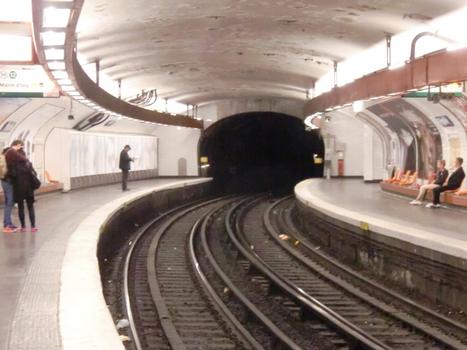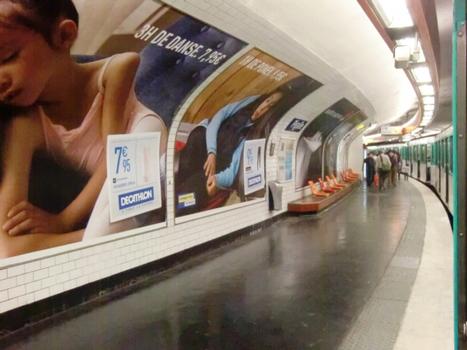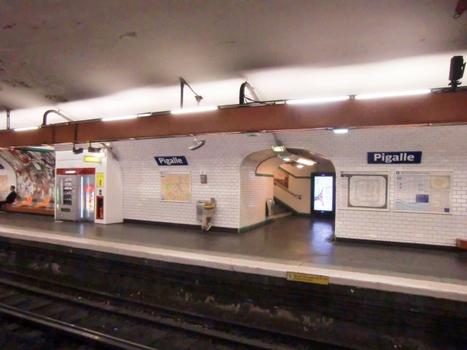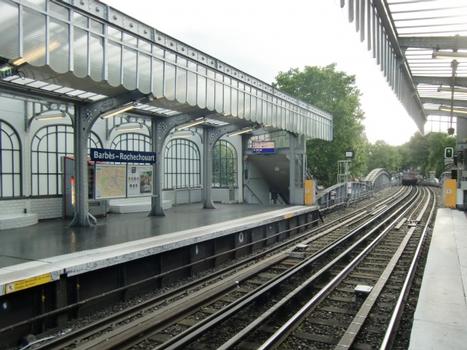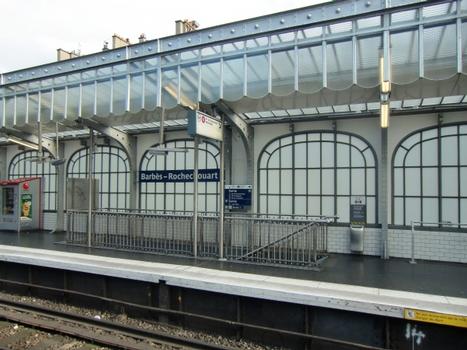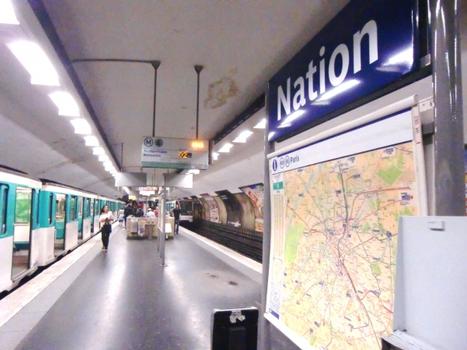General Information
| Completion: | 13 December 1900 |
|---|---|
| Status: | in use |
Project Type
| Function / usage: |
Metro (Subway, Underground) Line |
|---|
Location
| km | Name |
Technical Information
Dimensions
| total length | 12.4 km | |
| number of stations | 25 |
Excerpt from Wikipedia
Line 2 is one of the sixteen lines of the Paris Métro rapid transit system in Paris, France. Situated almost entirely above the former city walls (boulevards extérieurs), it runs in a semi-circle in the north of Paris.
As its name suggests, Line 2 was the second line of the Métro to open, with the first section put into service in December 1900; it adopted its current configuration in April 1903, running between Porte Dauphine and Nation. There have been no changes in its service pattern since.
At 12.4 km (7.7 mi) in length, it is the seventh-busiest line of the system, with 92.1 million passengers in 2004. Slightly over 2 km (1.2 mi) of the line is built on an elevated viaduct with four aerial stations. In 1903, it was the location of the worst incident in the history of the Paris Métro, the fire at Couronnes.
History
Chronology
- 13 December 1900: The first portion of line "2 Nord" was opened between Porte Dauphine and Étoile.
- 7 October 1902: The line was extended from Étoile to Anvers.
- 31 January 1903: The line was extended from Anvers to Bagnolet.
- 2 April 1903: The line was extended from Bagnolet to Nation.
- 10 August 1903: A short circuit on a train caused a disastrous fire that killed 84 people at Couronnes and Ménilmontant stations.
- 14 October 1907: Line "2 Nord" was renamed line 2.
Birth of the line
On March 30, 1898 a déclaration d'utilité publique was made, recognizing the public benefit of the first six planned lines of the Paris metro. In response, the city began rapidly constructing the first line in hopes of opening it in time for the world's fair in 1900. During the first stage of development, three lines designated A, B, and C were planned for construction:
- A: from Porte de Vincennes to Porte Dauphine.
- B: circular route along the old city walls
- C: from Porte Maillot to Menilmontant, using line B tracks from Étoile to Batignolles.
However, after a detailed traffic study was conducted, changes were proposed to the tracks lying west of Étoile: the segment from Étoile to Porte Maillot of line C would be integrated into line A, and line C would pick up the segment from Étoile to Porte Dauphine. This change allowed trains on line B to stop at Porte Dauphine, and thus Porte Dauphine was designated the terminus and origin of line B.
Shortly thereafter, line B was split into two lines in hopes of simplifying its use; the section from Porte Dauphine to Nation was designated as Line 2 North, and the remaining section from Nation to Étoile was designated Line 2 South. Line 2 South would eventually become line 6.
The first 1,600 metres (0.99 mi) section of line 2 was constructed at the same time as line 1, opening only a little later on December 3, 1900. This section consisted of three stations, Porte Dauphine, Victor Hugo, and Étoile, and was circulated by rolling stock consisting of three cars each. At Étoile, trains reversed direction via a track transfer (due to it serving as only a temporary terminus), while at Porte Dauphine and Nation direction was reversed using a turn-around loop.
Text imported from Wikipedia article "Paris Métro Line 2" and modified on July 22, 2019 according to the CC-BY-SA 4.0 International license.
Participants
Relevant Web Sites
Relevant Publications
- (2001): Métro insolite. Parigramme, France (France).
- (1983): Notre Métro. 2nd edition, Neuilly-sur-Seine (France).
- About this
data sheet - Structure-ID
10000459 - Published on:
06/03/2004 - Last updated on:
28/05/2021

